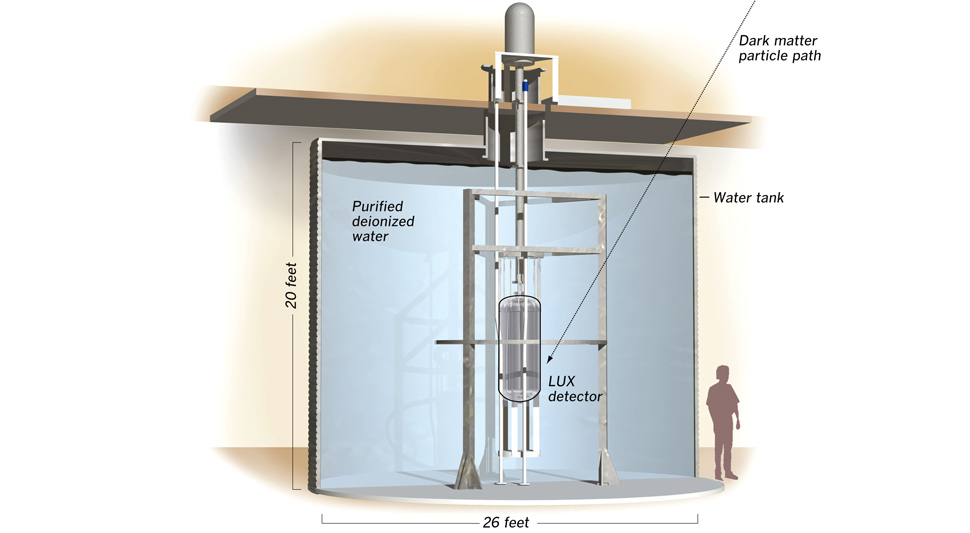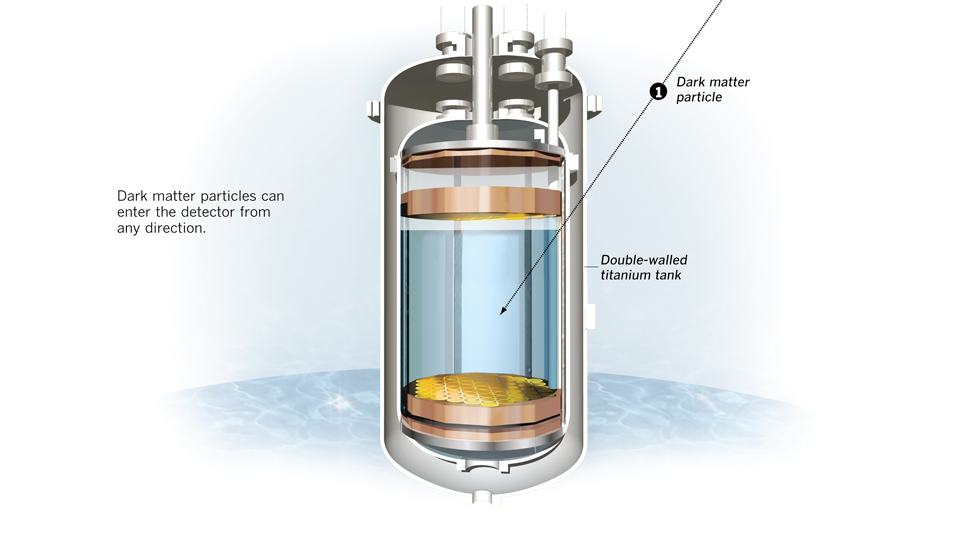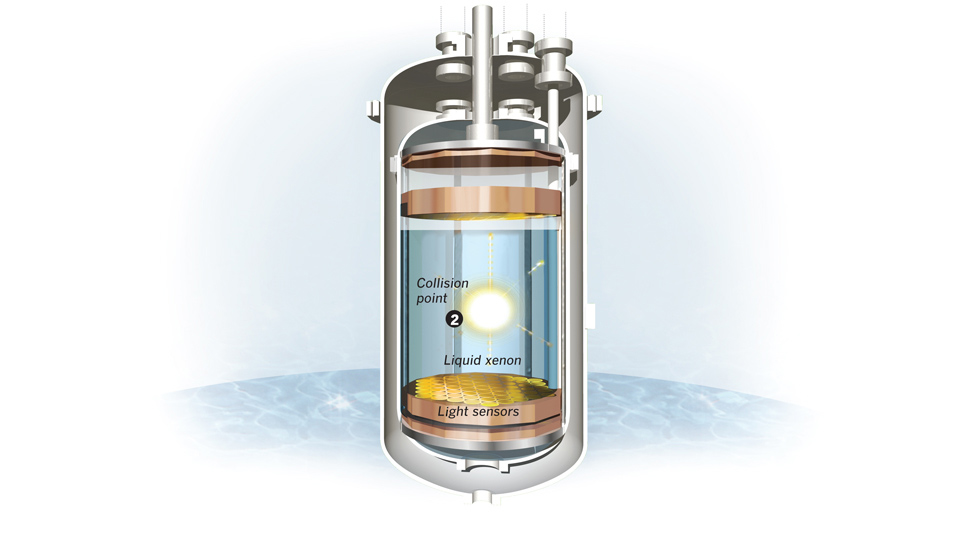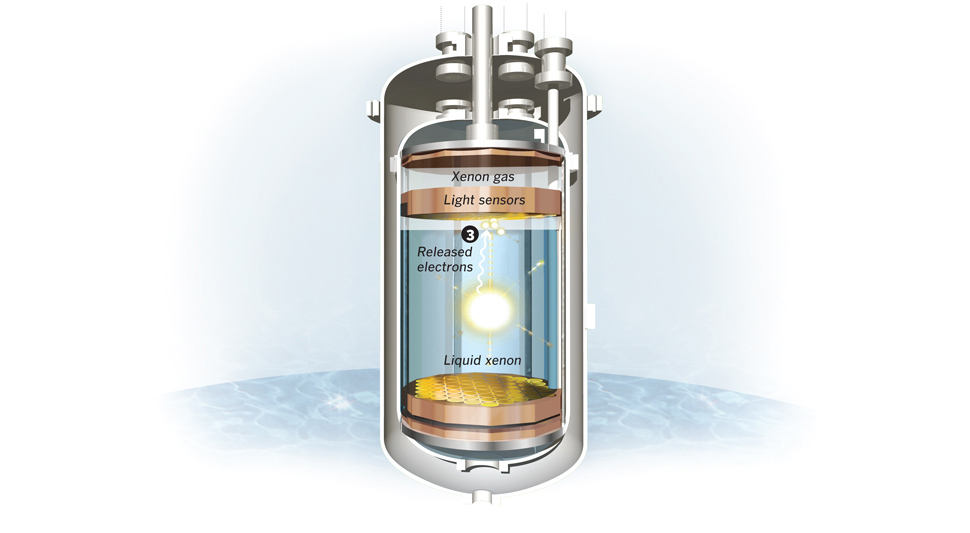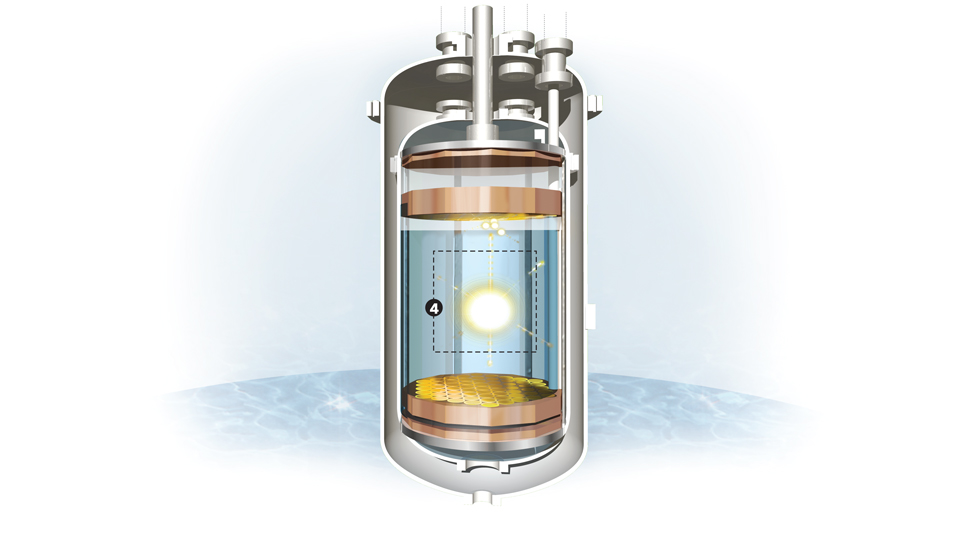interactive
Searching for dark matter
Scientists plan to use a giant xenon-filled detector to search for elusive dark matter, invisible subatomic particles believed to make up a vast portion of the universe and hold galaxies together.
Nearly a mile underground
Shielded from nearby radiation
How the detector works
How the detector works
How the detector works
How the detector works
 BACK
BACK
|
NEXT

(1/ )
Located inside a former South Dakota gold mine, the Large Underground Xenon (LUX) detector is designed to pick up traces of dark matter passing through the Earth.
A stainless steel tank filled with 70,000 gallons of purified, deionized water shields the detector from local radioactivity and blocks other particles that could be confused with dark matter.
Scientists hoping to detect dark matter will watch for a twin-flash combination that occurs when a particle collides with highly purified xenon inside the detector.
Light sensors watch for a flash when a particle strikes the liquid xenon inside the detector.
A second flash occurs when electrons released by the initial collision rise into the xenon gas at the top of the detector.
Scientists focus on analyzing collisions that occur near the center of the tank, where few particles reach.
 BACK
BACK



